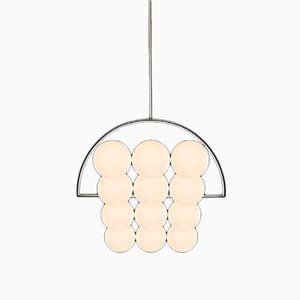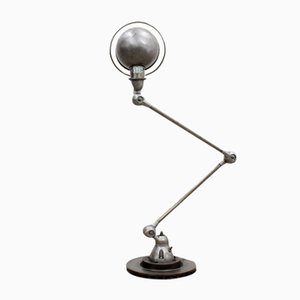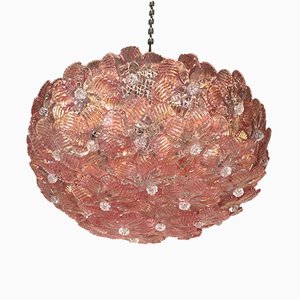How London-based Godrich Interiors creates singular spaces
All in the Mix
Godrich Interiors displays an impressive stylistic range. With just a glance at the West London-based design firm's portfolio, it's instantly clear that it's earned its reputation for dynamic, beautifully layered spaces, each of which has been approached individually, in harmony with the specific architectural contexts and the unique lifestyles of their diverse private and commercial clients from all over the world. Beyond this emphasis on the bespoke, their projects share an alluring blend of grace and personality—not the easiest combination to achieve!—thanks to Godrich’s vision, expertise, and passion. We sat down with New Zealand native and Godrich Associate Director Megan Oliver for a peek behind the curtains and to learn more about her and the rising-star firm she's been helping to build up since 2009.
Wava Carpenter: How would you describe the clients of Godrich? Do they all have something in common?
Megan Oliver: I think the kind of work we do attracts a certain type of client. They are generally quite creative and are looking to work with a company that will treat them as individuals and create something that reflects them and their way of life.
WC: Which projects have been particularly gratifying and/or instructive to you personally?
MO: The Palazzo we designed in Venice was a career highlight, and I think it will be hard to beat! I still remember seeing the space for the first time. It was incredible, and I was totally overwhelmed. The aesthetic was so foreign to me that a lot of research was necessary to ensure that I really understood the envelope we were working within. The opportunity to work with traditional local craftsmen to create bespoke lighting and joinery for the interior was a real learning experience and an absolute joy. Seguso , who made a lot of the lighting for the apartment, have been making Murano glass for 27 generations. That fact still blows my mind.
Another one of my favorites is the very first project I did at Godrich. It was a family home for a creative client in London. The works included an extension, a basement, a large tree house, and recording studio in the garden. So, it was all encompassing! We went on to design two further properties with them, and I enjoyed them all.
WC: How would you describe your own design approach?
MO: From the very beginning of my career, I have always respected the architecture we are working within. This has always been the starting point of my design process and generally something I’m bordering on obsessive about. It’s key to creating something authentic.
WC: In looking over the larger Godrich Interiors portfolio, it seems that you approach each project quite individually. What is that process like? How do you create personalized spaces for your clients?
MO: Our projects are client-led, so we don’t walk into a job with a preconceived idea of what the interior should look like. I believe the design process is inspired in equal parts by the architecture, the client, and our response as the design team. That way every project is unique, timeless, and authentic. We work closely with our clients, and the process happens quite organically. It is also important to us that the client enjoys the process. Anyone who has ever undertaken a large-scale interior project knows that it can be very stressful. I believe part of our job is to take the stress away (as much as possible!) and to allow the client to enjoy what is a really exciting time.
WC: Can you talk about how you choose the pieces you use? Do you travel to source objects? Do you find the pieces first, and then find them a home? Or do you go out looking for pieces for specific projects and clients?
MO: I think as a designer, you’ve always got your eyes peeled for interesting things, and—often without realizing it—you’re cataloguing them mentally for a time when they may be useful. As a team, our knowledge of suppliers is vast, and when sourcing for specific items, the first port of call is the team. We have good relationships with a lot of dealers who are prepared to scour the globe for specific requests and of course the Internet, traipsing the streets, and travelling afar are a regular occurrence.
WC: Can you speak a bit about how Godrich approaches mixing design pieces across an array of eras and styles? For instance, what is your thought process when combining antiques with midcentury modern, contemporary pieces, and fine art?
MO: That’s a slightly tricky one to answer really, as the process happens quite organically. I don’t stop and think about intentionally mixing aesthetics; it’s more about trying to achieve balance within the interior. Different eras have a different visual weight to them, so mixing pieces is often necessary to achieve a visual balance. I also think that mixing eras and styles is essential to create a home that appears to have grown over time and that can continue to grow as needed.
WC: How do you feel about the word eclectic? Do you feel it captures your aesthetic? Is it overused? Which words would you use to describe your aesthetic?
MO: The term eclectic has definitely been overused. We seem to find ourselves in a time where it’s often used to describe a bunch of old tut thrown together. That fad will die down, and the word eclectic will come back around to describe a considered collection of styles. Words to describe my aesthetic would be considered, relaxed, and joyful.
WC: Which historical time and place do you feel best expresses your design aesthetic?
MO: There is so much that I’m inspired by that it’s hard to commit to just one aesthetic. If my arm were twisted however, I would say modernist architecture from the ’30s –’60s. The attention to detail—in terms of how the space is used and the focus on materiality—gets me every time. The interiors may appear [to be] what many people believe to be minimalist, but they are far from that. They are rich, considered, and the detailing and materiality is impeccable. Everything has a purpose. Everything is beautiful. I recently visited The Homewood in Esher. That house is my current dream. The Villa Müller by Adolf Loos is another house that I almost had to be forcibly removed from. So beautiful!
WC: In your dream project, are there any particular design pieces or decorative elements that you would definitely include? Are there any design pieces that always work or always make for a more livable and beautiful home?
MO: Whilst every project is different and each client has different requests, great lighting will always make for a more livable and beautiful home. Light is a necessity, but it should also be something special and flexible to ensure you get the most out of each space. My current dream project would include a Cupboard Ono designed by Love Arbén for Lammhults (1992), a Candy Cube by Sabine Marcelis (2014-ongoing), and a Cassina armchair designed by Mario Bellini in the 1960s. That list change changes all the time! But today those are my loves.
More to Love
Mid-Century FK-86 Cognac Sand Leather Office Chair by Preben Fabricius & Jørgen Kastholm for Kill International

Stadium Light by Niclas Jørgensen, 2017

Mid-Century French Industrial Lamp from Jieldé

Tube Pendant No. 1 by Naama Hofman

Italian Dresser by Silvio Coppola for Bernini, 1968

Falcon Chairs by Sigurd Resell for Vatne, 1970s, Set of 2

Mid-Century Italian Murano Glass Pendant Lamp from Seguso

Flagmented Pillow G by CTRLZAK Studio

Contemporary Italian Murano Glass Chandelier, 2016

